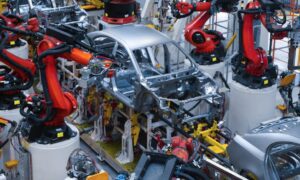Welcome to the realm of supercomputers, where unmatched power and speed converge to unveil the universe’s enigmas. These technological giants have become indispensable tools for scientists, researchers, and engineers, tackling some of humanity’s most intricate challenges. From simulating climate patterns to unraveling the human genome, supercomputers are transforming industries across the spectrum. This article delves into their mechanics, exploring how these prodigious machines crack seemingly insurmountable puzzles.
Introduction to Supercomputers
Supercomputers reign as the world’s most potent computers, processing extensive data and executing complex calculations at unparalleled speeds. Their applications span from weather forecasting and climate modeling to simulating nuclear detonations and designing new pharmaceuticals.
Despite their incredible might, supercomputers are fundamentally straightforward machines. At their core, they consist of an array of processors operating in parallel to solve problems. More processors equate to heightened performance.
Supercomputers can boast thousands, even millions, of processors, each addressing a specific facet of the problem. This parallel processing fuels their extraordinary potency.
While there’s more to a supercomputer than its processors, such as interconnectivity and controlling software, raw computational power remains their essence.
Understanding Supercomputers
A supercomputer surpasses standard computers significantly in speed and capability. They excel in intricate tasks like weather prediction, climate studies, oil exploration, molecular modeling, and extensive physics and math simulations.
Supercomputers often host hundreds or thousands of processors working in concert to solve problems. Ample memory and storage complement their hardware. These machines usually inhabit specialized facilities to ensure proper cooling.
Supercomputing speed is measured in floating-point operations per second (FLOPS). As of June 2018, the fastest supercomputer is China’s Sunway TaihuLight, capable of 93 petaflops (quadrillions of FLOPS).
How Supercomputers Tackle Complexity
Supercomputers approach complex problems by segmenting them into more manageable fragments. This strategy unveils hidden patterns and relationships.
Understanding supercomputing’s approach to complexity entails comprehending complex problems themselves. These are challenges with numerous variables, challenging traditional solutions. For instance, weather forecasting involves numerous variables, thus complexity. Supercomputers excel in this domain due to their rapid processing of vast data sets, unveiling relationships between variables.
When presented with a complex problem, a supercomputer divides it into smaller segments. Powerful processors then analyze each segment, searching for patterns and connections. By grasping the problem’s granular details, the supercomputer often uncovers solutions that elude traditional methods.
Leveraging Supercomputing in Different Sectors
Supercomputers play pivotal roles across numerous sectors in solving intricate problems.
In medicine, supercomputers aid drug and treatment development, along with mapping the human genome. Weather forecasting benefits from more precise atmospheric and ocean models. Astrophysics employs supercomputers to simulate galaxy formation and star evolution.
Businesses and organizations also employ supercomputers for financial analysis, product design, and oil and gas exploration.
Pros and Cons of Supercomputing
Supercomputers stand as powerful tools for complex problem-solving, yet they harbor their own set of pros and cons.
Advantages of supercomputing include:
Tackling seemingly insurmountable problems: Supercomputers handle extensive data and execute billions of calculations per second, making them suited for challenges beyond traditional computers’ capacity.
Enhanced accuracy: Their substantial processing power yields results surpassing those of traditional computers. This is crucial in fields where even slight errors, such as weather forecasting or aircraft design, hold severe consequences.
Speed: Supercomputers resolve issues that traditional counterparts would require years to address, often accomplishing tasks in a fraction of the time.
While advantages are evident, there are potential downsides to supercomputing:
The Future of Supercomputing
Supercomputing’s future remains enigmatic. Nonetheless, we anticipate enhanced speed, power, and energy efficiency. As these machines assume more roles, including data storage and analysis, their complexity will increase.
Supercomputers will play an increasingly pivotal role in our lives, from weather forecasting to stock market analysis. Their growing sophistication equips them to tackle ever more intricate problems and deliver more accurate insights.
While the future remains uncertain, one certainty persists: these awe-inspiring machines will continue to dazzle us with their velocity, power, and precision.
Conclusion
Supercomputers stand as potent tools in solving intricate problems. Not only have they transformed scientific and mathematical analysis, but they’ve also permeated various industries. From predicting weather to modeling drug interactions, supercomputers offer solutions once deemed impossible. With advanced hardware and software engineering, these machines highlight the remarkable progress in computational power.



































